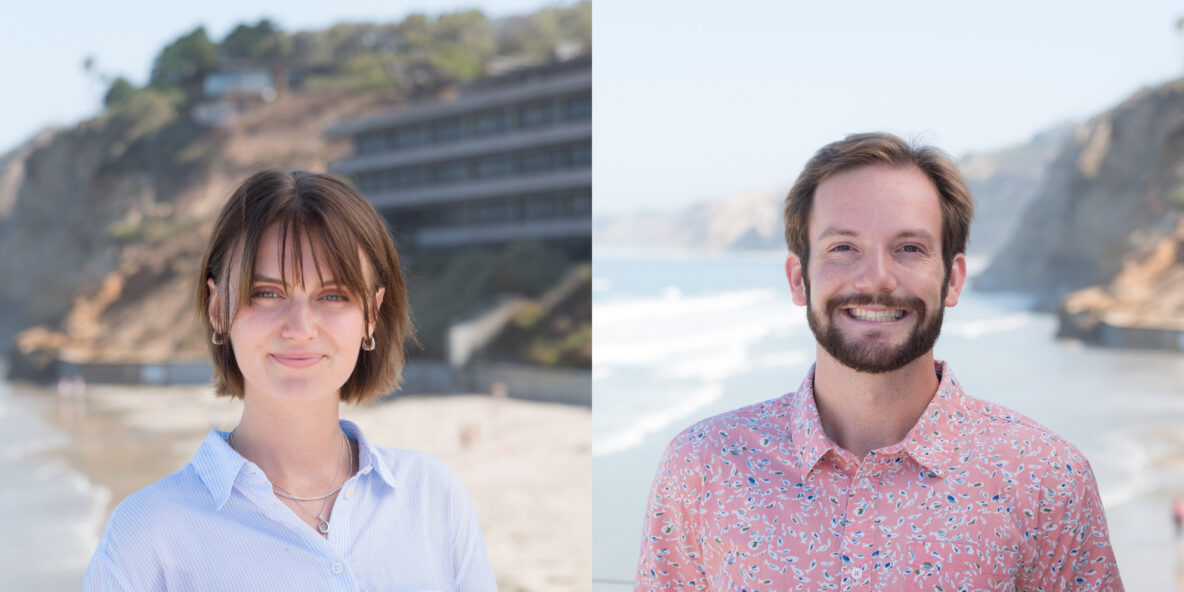Written by: Hale Brown and Pete Polonsky
This academic year, the SoCal Heat Hub was proud to yet again work with two graduate students from the Masters of Advanced Studies (MAS) in Climate Science and Policy (CSP) program here at Scripps Institution of Oceanography (SIO). These students, Pete Polonsky and Hale Brown, worked closely with Heat Hub scientist advisors to develop their own multidisciplinary capstone research projects on topics related to climate change, extreme heat, and energy. For this blog post, we caught up with these MAS CSP students to hear about their experiences conducting their capstone research and what plans they have for the future.
Hale Brown
For my research project in the CSP program at SIO, I explored the underrecognized public health risks of nighttime heat in California. Public health systems often overlook the unique risks posed by nighttime-accentuated heatwaves, where elevated temperatures persist overnight and create distinct health hazards of prolonged exposure. Although research shows that nighttime temperatures are rising faster than their daytime counterparts, nighttime heat remains largely absent from existing policies, alerts, and adaptation strategies. My project aimed to fill this critical gap by using a mixed-methods approach to assess both the epidemiological impacts of nighttime heat and the extent to which institutions are responding to this emerging climate-health threat.
The quantitative portion of my study involved epidemiological mapping of heat-related hospitalizations across California to identify where nighttime-accentuated heatwaves, compared to other types of extreme heat, had the greatest impact on health outcomes. We found that hospitalizations attributable to nighttime-accentuated heatwaves were geographically dispersed: 22% of California ZIP Codes exhibited elevated risks, with some clustering particularly in the Southern Deserts and coastal urban areas. Notably, in these ZIP Codes, nighttime-accentuated heatwaves, rather than the more commonly recognized and expected daytime extremes, emerged as the primary driver of heat-related health impacts. This finding challenges the prevailing emphasis on daytime heat in public health planning and underscores the significant, yet often overlooked, risks posed by nighttime heat – risks that must be addressed in future adaptation and response strategies.
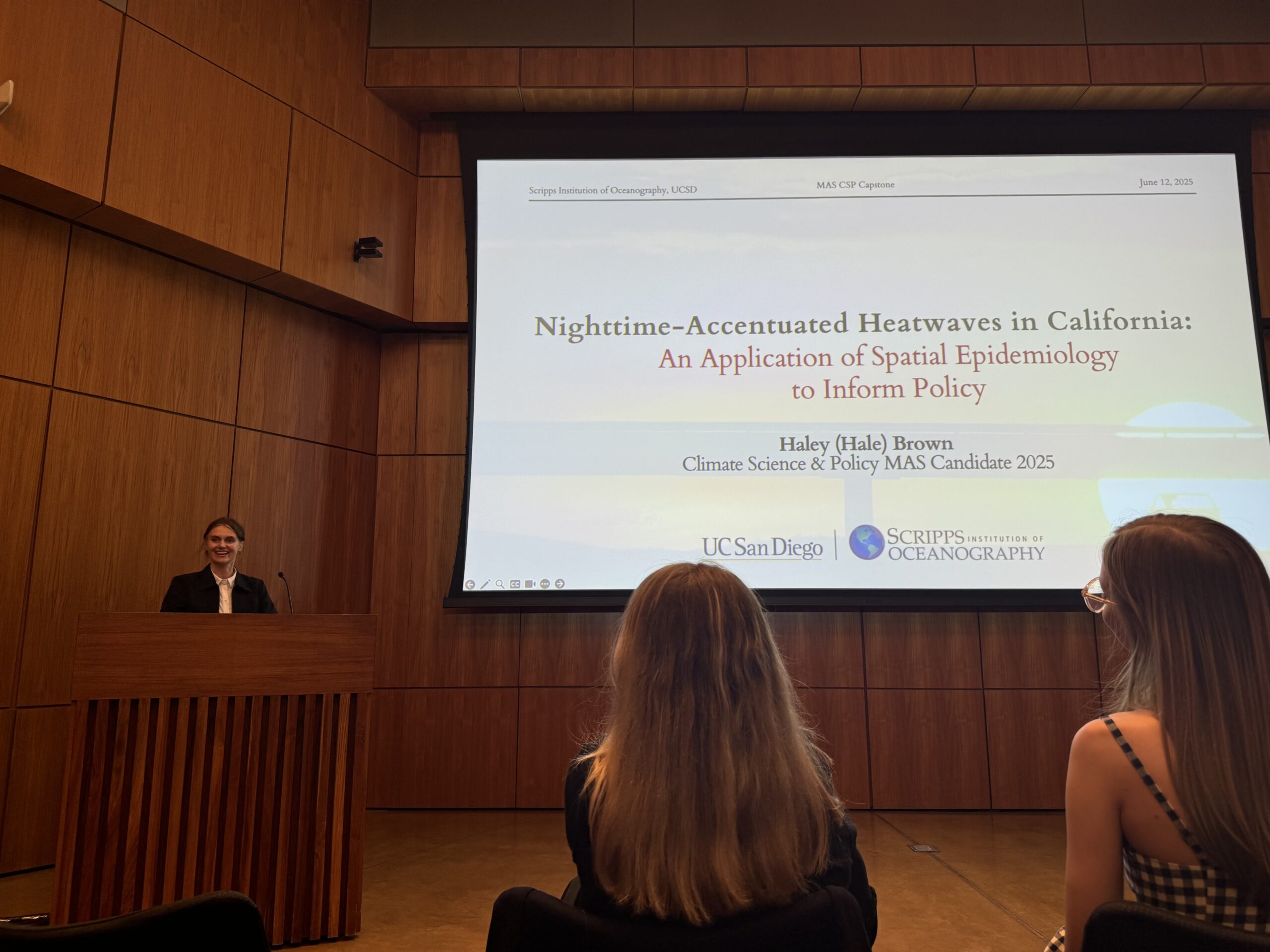
Hale presents their work at the MAS CSP Capstone Symposium on June 12, 2025.
To better understand institutional awareness of nighttime-accentuated heat and how policies are responding, the study then drew on stakeholder interviews to examine the policy, governance, and equity dimensions of nighttime heat resilience. I conducted interviews with stakeholders from local NGOs, county health agencies, state departments, and international advocacy organizations to explore how this emerging health risk is recognized and addressed in current planning and response efforts. Interviews were recorded and coded by two independent coders, resulting in 16 unique codes and five key themes: Cooling Strategies & Infrastructure, Communication & Public Awareness, Data & Evidence Gaps, Governance & Policy Action, and Equity & Vulnerability. Stakeholders consistently noted that current heat policies and infrastructure fail to account for nighttime conditions, despite clear physiological risks associated with insufficient overnight cooling.
By combining fine-scale analysis with stakeholder insights, this project highlights the spatially-dispersed impacts of nighttime-accentuated heatwaves and reveals why existing systems often fail to respond adequately to this uneven and evolving threat. This study underscores that while most public health frameworks and emergency systems focus on daytime heat, nighttime-accentuated heat presents a distinct and intensifying risk, particularly in vulnerable communities where cooling infrastructure is lacking and socioeconomic stressors compound exposure risks. Public health systems must evolve to reflect this shifting risk landscape. Through this work, we highlight the urgency of integrating nighttime heat into public health planning, early warning systems, and resilience infrastructure to ensure that adaptation strategies are scientifically grounded, equitable, and responsive to the realities of those most affected.
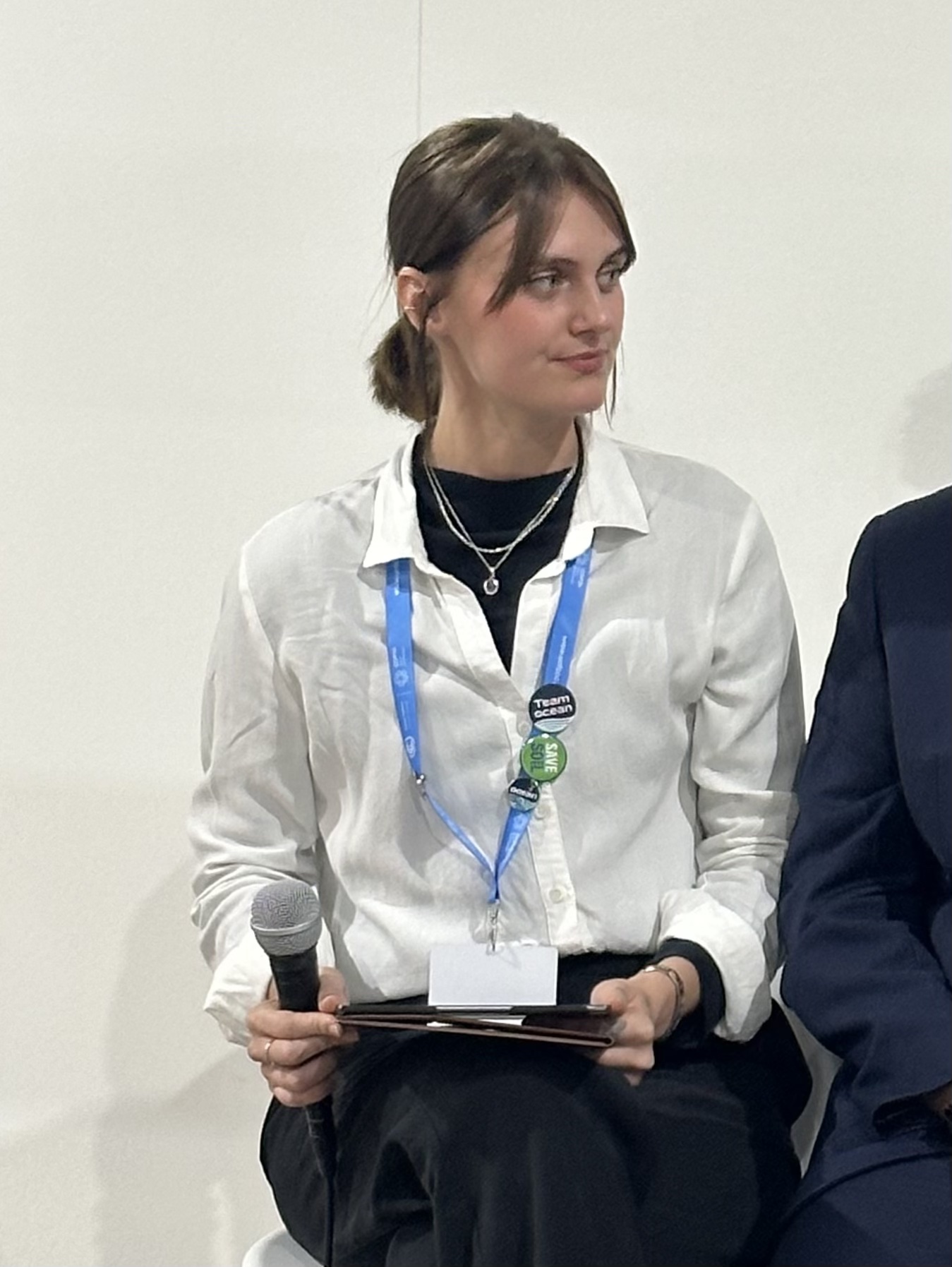
Hale participates in the UNFCCC SB62 intersessional climate conference in Bonn, Germany.
Throughout this project, I was guided by Dr. Tarik Benmarhnia, Dr. Anaïs Teyton, and Dr. Sasha Gershunov, whose insights into the intersection of California heatwaves, environmental justice, and epidemiological methods shaped both my research and analytical skills. In particular, Anaïs deepened my proficiency in ArcGIS, QGIS, and R/RStudio: tools I hope to continue using in future research and policy work. I am also grateful to the Julia R. Brown Fund, which supported my travel to the UNFCCC SB62 intersessional climate conference, where I shared policy insights from this research and engaged in dialogue with international peers about the challenges of addressing nighttime heat in diverse contexts. Looking ahead, I am committed to advancing work at the intersection of climate science, public health, and policy to help drive more inclusive, evidence-informed approaches to climate-health adaptation.
Hale’s capstone presentation can be viewed online here and their capstone paper can be read here.
Pete Polonsky
I joined the CSP program with a background in energy policy and an interest in conducting research at the nexus of energy, equity, and data analysis. Having worked most recently in Honolulu and moved to San Diego, electricity rates were top of mind as the utilities in these two cities have the highest electricity rates in the country.
This led me down two paths of inquiry. First, how will climate change impact heat stress and the electricity we consume to deal with heat? In my research, which was supported by the Heat Hub, I learned that extreme heat is a deadly, silent killer, that heat waves are worsening, and that low-income customers struggle to afford their electricity bills today.
Second, given that climate change will exacerbate existing energy inequities, how can we modify the existing rate structure to address the affordability crisis and help customers survive heat waves? To address this question, I quantified the relationship between electricity consumption and heat stress, then proposed a scheme with broader protections for customers during heat waves, named Universal Baseline Electricity (UBE).
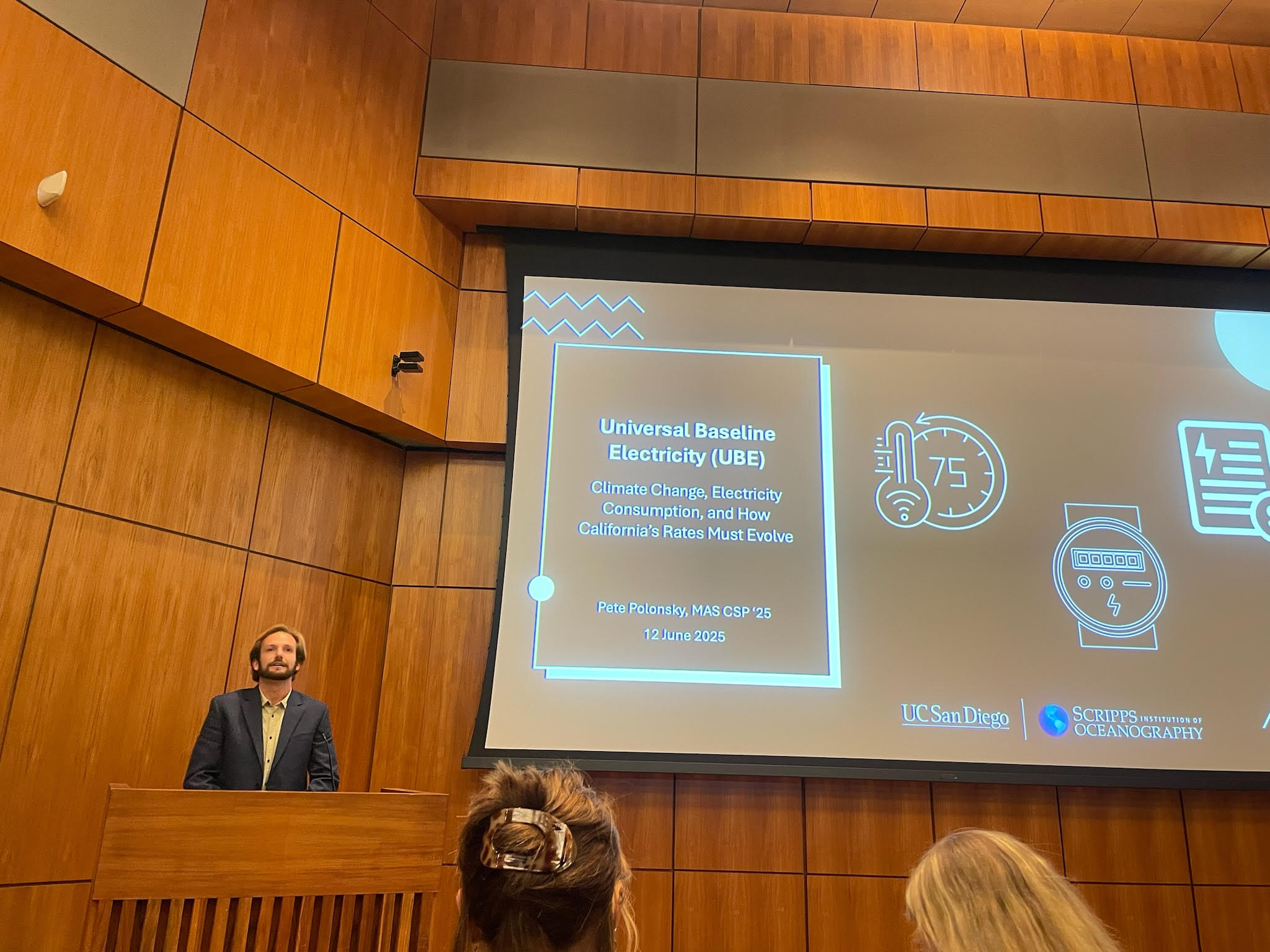
Pete presents his work at the MAS CSP Capstone Symposium on June 12, 2025.
I found a “U”-shaped relationship between electricity consumption and daily maximum temperature, in which customers use more electricity at hotter and colder temperatures than at moderate temperatures, with seasonal patterns. This relationship varied by climate zone, income level, median age, and race. Layering on predicted climate change through 2100 for this relationship, I found that electricity consumption may increase substantially solely in response to higher temperatures in the summer, fall, and spring months (and decrease in the winter months due to less heating needs).
I present UBE as a framework to address the needs for rising electricity usage during heat waves and more affordable rates. UBE has four building blocks: free or heavily discounted baseline allowances of electricity, premiums on high and extreme high usage of electricity, disconnection bans during the summer, and treatment of electricity rates like income with a progressive rate structure. These building blocks all have foundations in existing rates, and I provide additional analysis on the framework of UBE.
I note that how we shape electricity rates in response to climate change will impact how customers use electricity in the face of worsening heat waves, so we need to understand both the risks to our energy system due to climate change and the scale of the affordability crisis to build a cohesive electricity system that protects both customers and the grid.
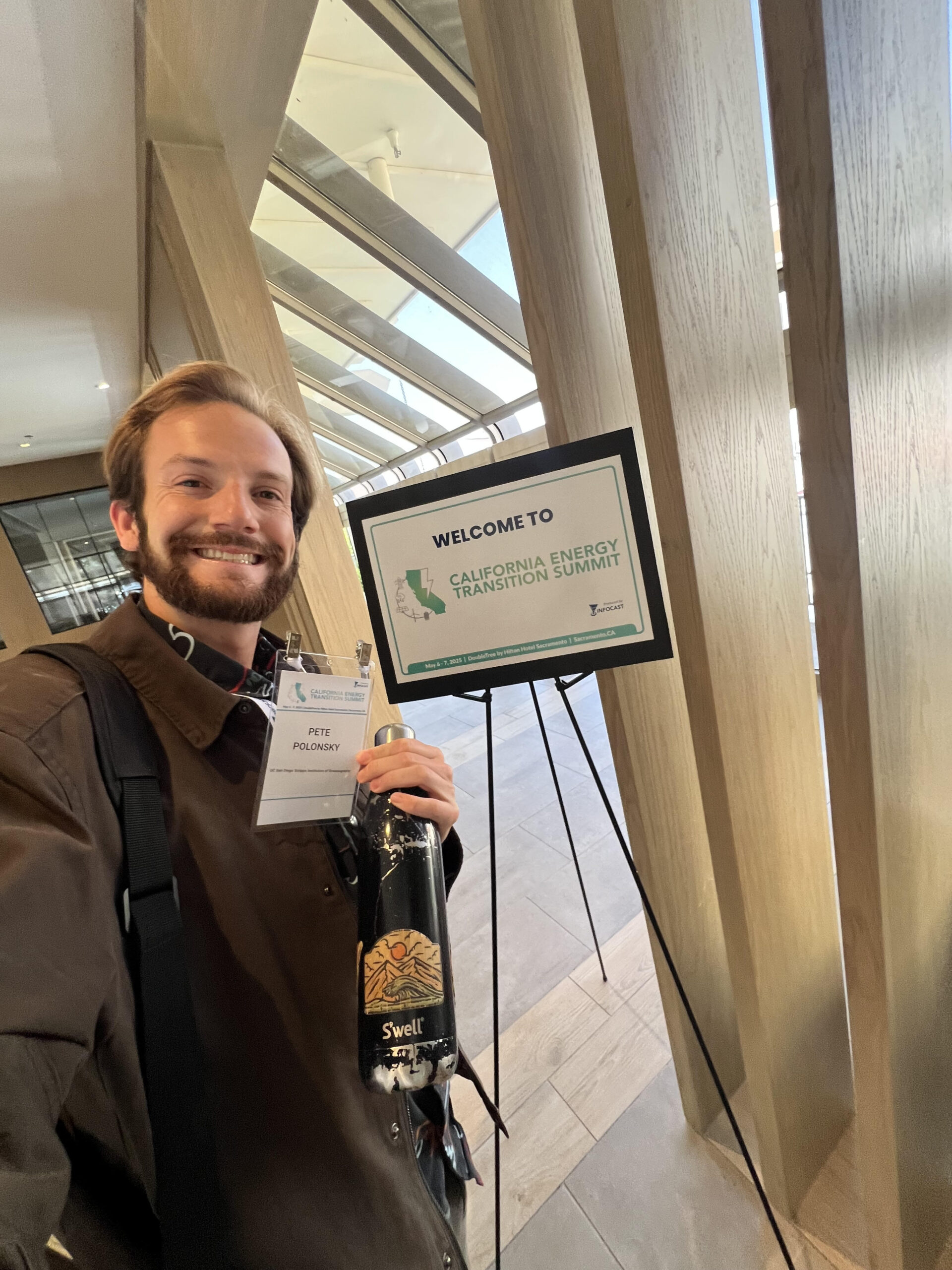
Pete attends the California Energy Transition Summit in Sacramento, California.
As part of my capstone project, I also attended the California Energy Transition Summit as a supplement to my capstone research to discover trending topics in the energy space in California and discern initial reactions to the idea of UBE. Following graduation, I will be joining San Diego Community Power, a local energy provider, as a Senior Rates Analyst. In my long-term career, I hope to continue to fight for affordable electric rates and a just and equitable clean energy transition.
Pete’s capstone presentation can be viewed online here and his capstone paper can be read here.
Header image caption: Portraits of Hale Brown (left) and Pete Polonsky (right).

